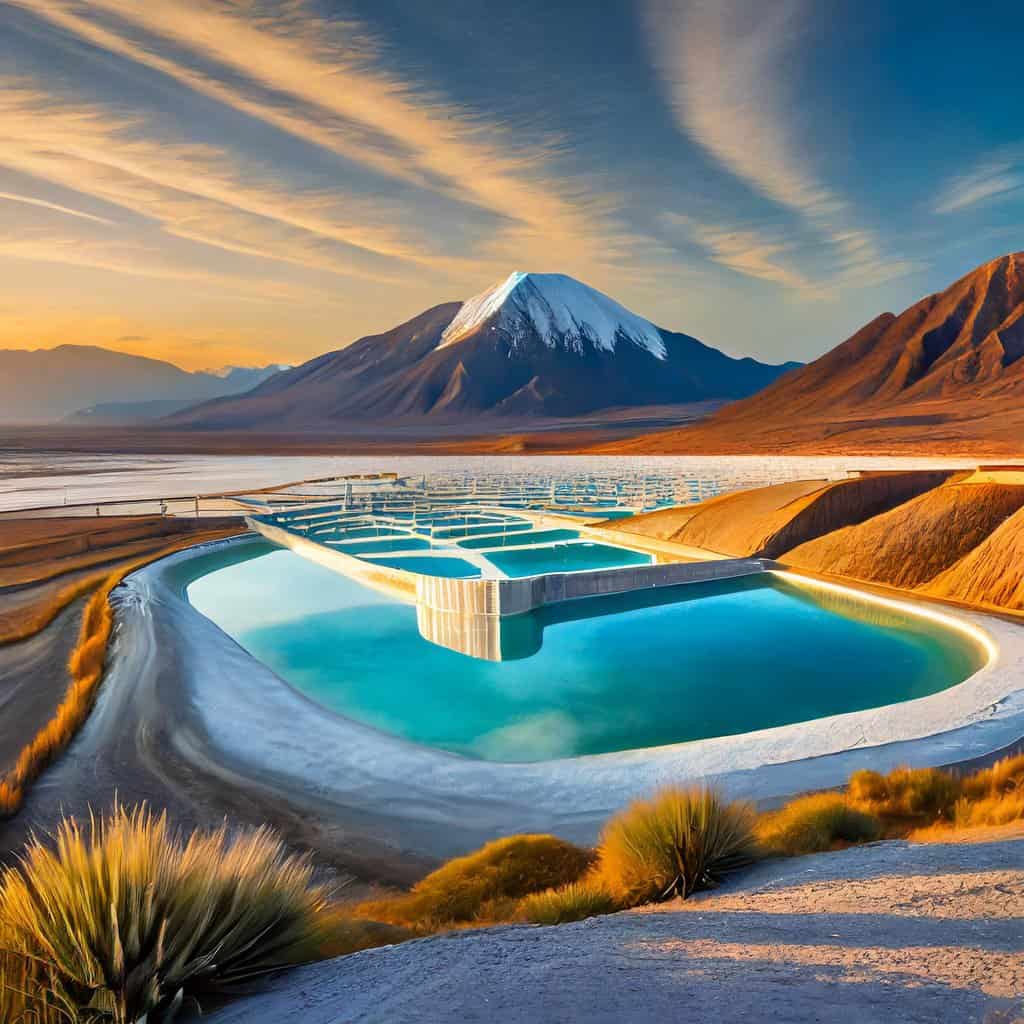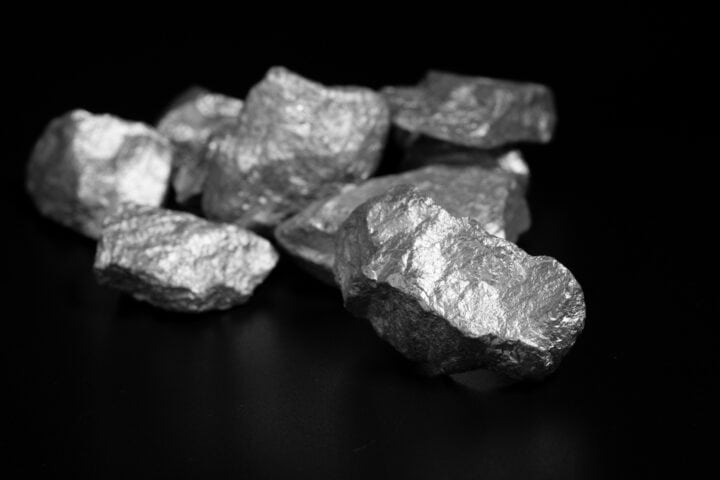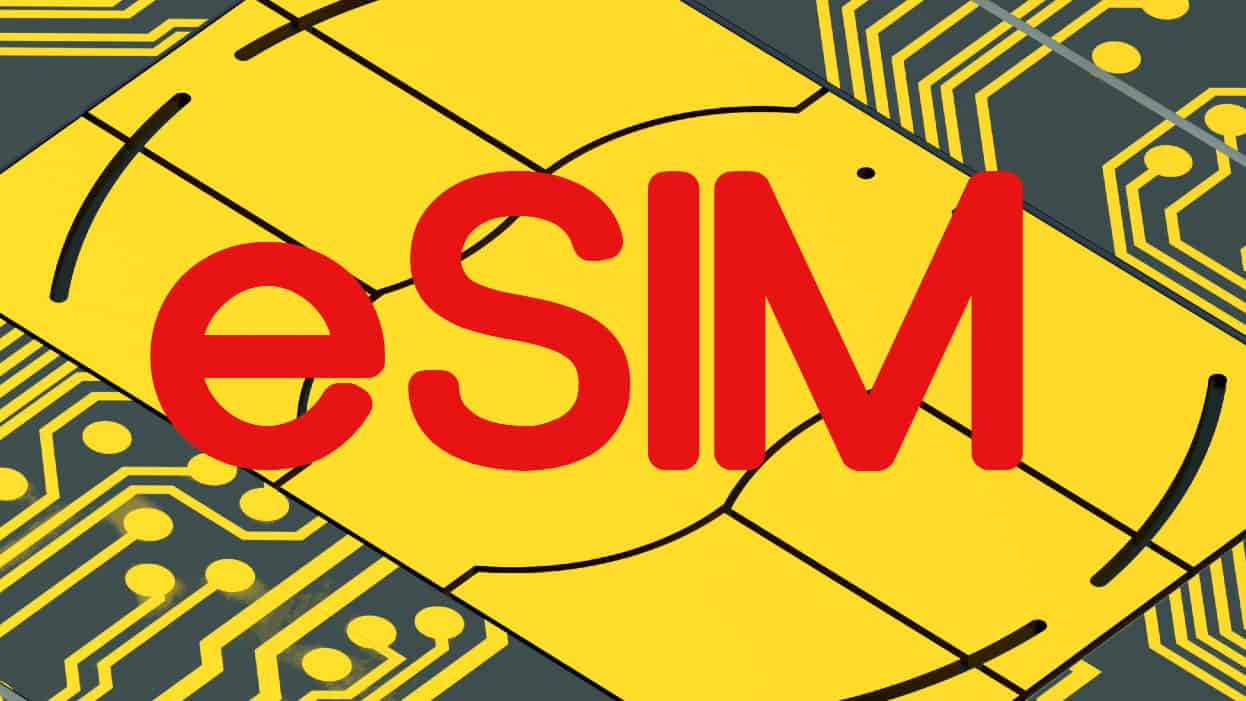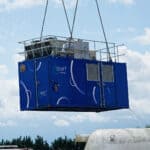The Salton Sea region’s potential to significantly impact the U.S. energy landscape has recently been highlighted, with its rich lithium reserves poised to revolutionize the country’s approach to energy independence and sustainable development. As of 2023, advancements in extraction technologies and increased interest in renewable energy sources have positioned the Salton Sea as a critical player in the global lithium market, potentially enabling the U.S. to reduce its dependence on lithium imports. This development aligns with broader goals of transitioning to green energy and enhancing national security through domestic resource utilization. Moreover, the integration of lithium extraction with geothermal energy production presents a unique opportunity for environmental sustainability and economic growth, showcasing a promising avenue for the U.S. to lead in the clean energy transition.
Exploring the Salton Sea’s Lithium Potential: A Step Towards Energy Independence
The Californian Salton Sea region has been recognized as a possible game-changer for the energy future of the United States. The Salton Sea Region in the Imperial Valley has the ability to become a major local source of lithium, according to an updated report from the U.S. Department of Energy and Lawrence Berkeley National Laboratory that was released in November 2023. If unlocked, the area would outperform American lithium demand, reducing reliance on imports and putting the country on the international lithium stage. These findings have broad ramifications because lithium has quickly evolved into a crucial resource for the energy transition and is essential to the development of environmentally friendly technologies like electric vehicles ( EV ). The report emphasizes the potential for removing lithium from volcanic brines, a by-product of the production of energy, and offers the intriguing prospect of combining the extraction of essential materials with the creation of clean energy.
The Salton Sea’s Lithium Revolution : a Geothermal industry solution
Can you briefly summarize the results of the analysis of California’s Salton Sea region and explain the significance of this resource? The Salton Sea lithium reservoir resource has the ability to supply the United States with about 3,400 kilotonnes of lithium thanks to technological advancements and more thermal development. Over 375 million electric vehicles could be supported by such a vast resource, which is more than all the vehicles presently on the road in the US. The Lawrence Berkeley National Laboratory (Berkeley) team’s report is currently one of the most thorough evaluations of lithium resources in the Salton Sea geothermal region. The evaluation of the resource itself, the mechanisms, and the lithium availability at the thermal reservoir were all part of it. The lithium extraction was also taken into account in the analysis, with a focus on lasting extraction, prospective environmental effects, and consideration of the local community.
What is the latest state of US regional lithium production, extraction, and refinement? How might this be altered by the Salton Sea region? The options for domestically sourced lithium in the United States are already constrained. Lithium is imported from Australia, China, Chile, and Argentina to meet the demand before being processed solely in China. Only 2% of the world’s supply comes from the United States, and demand is only rising. The report begins by examining power generation as the first step in the battery production process. 400 MW of thermal energy from the Salton Sea could be equivalent to 21,500 tonnes of lithium per year that are not currently used for commercial purposes. When combined with lithium extraction, the total known volcanic resource area has the ability to generate 2,950 MW of power, which could be equivalent to more than 375 million electric vehicle batteries. In essence, creating the resource in the Salton Sea region might enable the United States to stop being primarily an importer of lithium and instead become a worldwide lithium exporter.
Why is having a plentiful private lithium supply important?
Lithium is regarded as a crucial material both in the United States and around the world. It is a crucial part of the lithium batteries found in electronic vehicles, which are also used to power our smartphones, computers, and, more recently, the ones being created for reliable energy storage. Growing lithium demand is essential to sustaining the advancement of technical innovations like those mentioned above. The United States will be able to secure this by unlocking the potential of the lithium supply in the Salton Sea region. This will also help the local and national economies by generating jobs, promoting local manufacturing, and enhancing regional security.
What are the advantages of the process of extracting lithium from thermal brines? Geothermal power plants pump the brine to the surface through wells they drilled as warm geothermic brines dissolve minerals in the reservoir rock. Lithium is one of the many minerals dissolved in this brine, but it is an active process used to produce energy. The hot brine travels to the direct lithium extraction (DLE) facility after the steam has been passed through the power plant during the process’s power generation phase. The first of the two phases of extraction is the pre-treatment phase. This phase’s goal is to get rid of big solids that are common in the Salton Sea volcanic region, such as iron and silica. The brine moves to lithium extraction after the pre-treatment stage, and then the process is finished by re-injection of the briny back into the geothermal reservoir. It can therefore be heated up once more to ensure a clean supply because the system is fully closed loop. DLE’s efficiency and sustainability are its main advantages. The facility’s footprint is much smaller than the extensive evaporated mining techniques employed in South America. The process can be added to existing thermal power facilities because CO2 and nbsp emissions are significantly lower than those produced by hard rock mining operations. The Salton Sea’s integration with geothermal energy is a significant advantage for the State of California, the Department of Energy (DOE), and those three organizations. The area could not only supply the United States with lithium and its enormous economic potential, but it could also offer a clear, green, adaptable, and reliable energy source.

Challenges and Innovations in Lithium Extraction. Are there any possible difficulties in thermal brine lithium extraction and refinement?
Making DLE a reality presents considerable engineering challenges. For DLE to function efficiently, particularly in volcanic conditions, it takes between 90 and 95% of lithium recovery. The absence of a thorough monetary assessment is the main problem facing the world today. It is challenging to fully comprehend and, consequently, determine the fair and potential of combining volcanic and salt production without a consensus on the global cost or value. There will undoubtedly be more research done in this area.
What kind of technology is the DOE developing to help unlock the potential of the area? The Geothermal Technologies Office has funded research in a variety of ways, in addition to different DOE Offices that are attempting to address this issue. The United States just finished the American-Made Challenges Geothermal Lithium Extraction Prize, a three-phase competition in which teams competed to develop DLE processes and win $4 million in total. This prize gave an early glimpse into possible technical solutions because DLE is still in the early stages of development and there are many engineering challenges that need to be overcome. The Advanced Materials and Manufacturing Technology Office (AMMTO) and a $11 million research and development program will continue to support DLE technology and address important issues as the next step. It is a crucial materials collaboration that makes use of various DOE components in various capacities. The goal is to use a complete strategy to secure the supply of essential materials in the United States. The Geothermal Technologies Office is investigating how to remove these important components from geothermic brines. Another division of the Department is researching the potential for recycling crucial materials as well as how they might be extracted from other feedstocks like coal. The DOE announced its funding opportunity for Important Materials Accelerator Projects in November 2023. The next step in developing the technologies and manufacturing capabilities to support the supply of green essential materials, which is crucial to the advancement of natural technology, will be this opportunity.
How does the U.S. Department of Energy’s goal for fresh energy compare to this thorough investigation into the lithium in the Salton Sea region?
What effects does lithium extraction in the Salton Sea region have on the environment? This thorough investigation, which aims to quantify the lithium, is the first of its kind in the Salton Sea region to date. The Berkeley analysis gives us a clearer picture of the resource, more understanding of its scope, and the Salton Sea region’s contribution to the future of fresh energy in America. One of the Biden-Harris Administration’s objectives is to achieve a net-zero carbon economy by 2050. Both the DOE and the DLE process coincide with this goal. The economic repercussions are relatively minor when lithium is extracted using this method as an environmentally friendly alternative to different techniques. It is more environmentally friendly in and of itself, but it is also used in alternative technology, such as carbon-reduction EVs. The goal of providing fresh, strong, accommodating power that can balance periodic clear energy like solar and wind will also be supported by the growth of geothermal electricity generation. The report’s main effects are the production of good waste and the need for water. When extracting lithium and possibly other financially usable minerals, a significant amount of dissolved solids must be removed from the brine. As we think about potential uses or disposal options for this waste, this is undoubtedly a topic of potential interest and research. By turning some of those by-products into commercially feasible products themselves, this impact might be lessened. In terms of water use, 95% of the water in California’s Imperial Valley (where the Salton Sea is located) is used for farming. Imperial Valley is home to about 90% of the country’s winter greens, demonstrating how important the region is to agriculture. With an increase in thermal energy and DLE in the area, it is anticipated that the Imperial Valley’s water supply will decrease. This is because the Colorado River, which provides surface water for all agrarian uses, is getting smaller. Companies are looking into water conservation and recycling capabilities as well as how to reduce this risk usually in light of its potential for economic disruption in order to combat this. Potential applications for geothermal steam and the technology to recycle it are two areas that are now being thought about. Although the extraction technique may have some drawbacks, research is being done to find solutions and make sure the United States keeps relying on a water resource that is currently depleating.
The Future of U.S. Lithium Supply
What are the following steps after the analysis and how will the report affect the US’s position in the global lithium supply chain? The United States could become a global lithium exporter and replenish the global battery supply chain with an influx of lasting lithium if the Salton Sea thermal area is fully developed. The resource at hand might even allow the US to meet or even exceed the world’s lithium demand for many years. Ultimately, the Geothermal Technologies Office and the DOE continue to support DLE and other important material research, including those that could unlock the full potential of lithium resources in the Salton Sea region. Additionally, the United States is looking into the feasibility of thorough economic analyses and weighing the advantages and disadvantages of combining lithium and volcanic production. In order to fully access the temperatures necessary for fresh thermal generation, the United States is even investing in scientific advancements in drilling materials and instrumentation. The DOE is evaluating the lithium resource in the Salton Sea region in terms of entire access with the goal of providing answers to important questions that will assess its viability. How do we reach lithium, exactly? How can the future of thermal energy be guaranteed? How should the lithium resource be effectively managed? Although there is still much research to be done before the United States can completely access this top-notch resource, this analysis represents a significant step in that direction.












